The Corsair Force Series LX SSDs are the company’s latest foray in the solid state market and successor to the Force LS Series, which we found to be a decent drive as far as sequential read performance goes. The new Corsair line is specifically designed for mainstream consumers on a budget, with specs quoted to boast fast sequential and random read throughput at an entry-level price point. As such, the LX line is catered towards users on a budget who are looking to upgrade from an HDD-based system to the performance benefits of solid state storage without paying a premium, a statement that is made by many in the SSD industry. That said, the Force Series LX SSDs is indeed a very inexpensive line of solid state drives, so it will be interesting to see where it fits into the saturated SSD market.
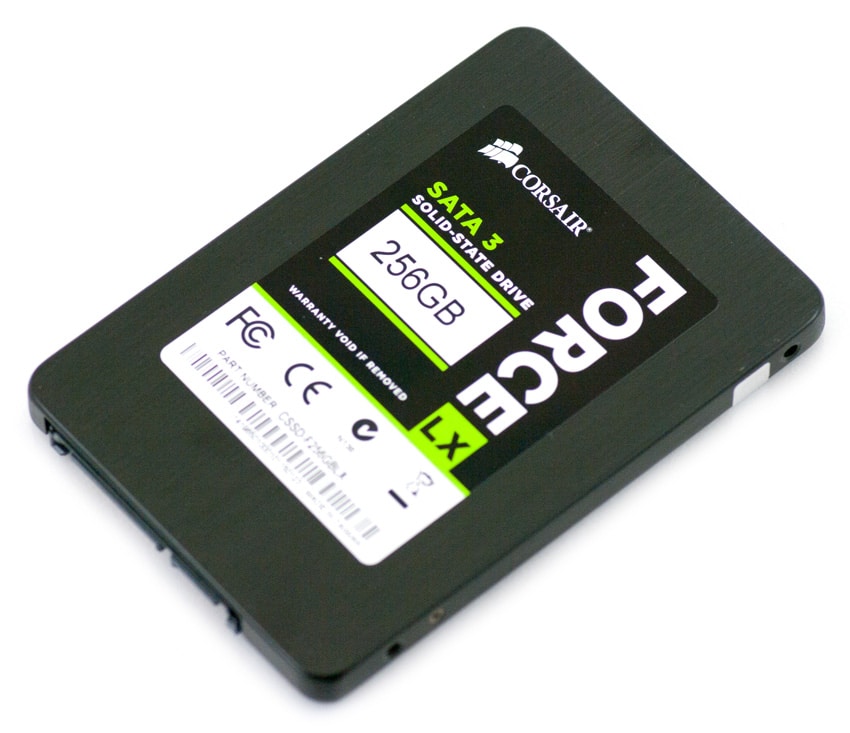
As for hardware specifics, the Force Series LX SSDs are equipped with a Silicon Motion SSD controller (a niche controller, and different than the Phison controller used in the previous Force series), which is paired with Micron 20nm ONFI NAND. The new Corsair SSD line is built within a 7mm 2.5” form factor and is quoted to deliver 560MB/s read speeds and up to 300MB/s for write activity.
Corsair has also bundled their new line with the SSD Toolbox software utility as a free download, giving users the ability to optimize their SSD’s performance, clone an existing hard drive, or securely erase all data on a drive. In addition, TRIM, NCQ and S.M.A.R.T. technologies automatically maintain drive performance for many years.
The Corsair Force Series LX SSDs come in capacities of 128GB and 256GB priced at $74.99 and $129.99 respectively. Both drives are backed by a three-year warranty as well as Corsair customer service and technical support. Our review unit is the 256GB capacity.
Specifications
- SSD Controller: Silicon Motion SM2246EN
- NAND: 128Gbit Micron 20nm ONFI MLC NAND, Synchronous
- Capacities: 128GB / 256GB
- Performance
- Max Sequential Read (ATTO): Up to 560MB/s
- Max Sequential Write (ATTO): Up to 150MB/s (128GB) / Up to 300MB/s (256GB)
- Max Random Read QD32 (Iometer): 68KIOPS (128GB) / 76KIOPS (256GB)
- Max Random Write QD32 (Iometer): 36KIOPS (128GB) / 70KIOPS (256GB)
- Form Factor: 7mm high 2.5”
- Interface Type: SATA 6.0 Gb/s (SATA 3)
- Operating Temperature: 0⁰C to +70⁰C
- Storage Temperature: -40⁰C to +85⁰C
- Operating Humidity: 90% RH (40°C)
- Storage Humidity: 93% RH (40°C)
- MTBF: 1 million hours
- Warranty: 3 years
Design and build
The Force Series LX SSDs consist of a smooth, durable, refined matte black metal build, allowing it to be finger-print proof. The front of the drive features a nice looking black, white and lime green color scheme, with a sticker that labels the drive with a plethora of information including the Corsair logo, product name, capacity, and other relevant information.
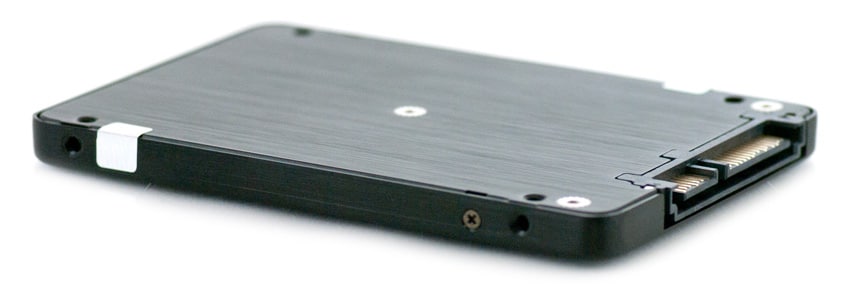
The side profiles of the LX SSDs show the screw holes, which enable the drive to be mounted properly. The new Corsair drive has a slim 7mm form factor. This allows the LX SSDs to fit easily in the 7mm Ultrabook space as well as in most applications.
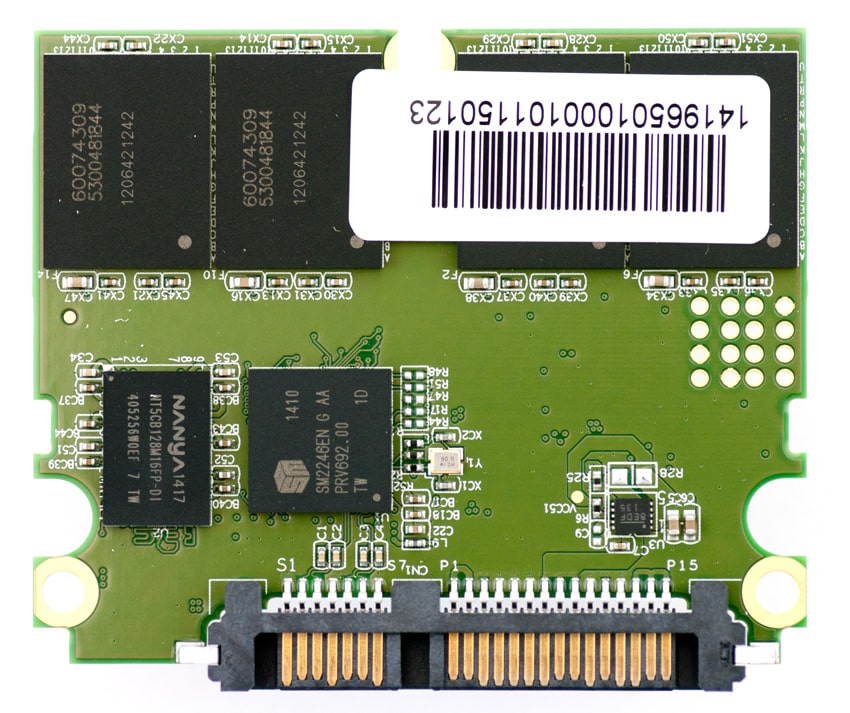
The corners are rounded out with standard SATA power and data connectors on the front.
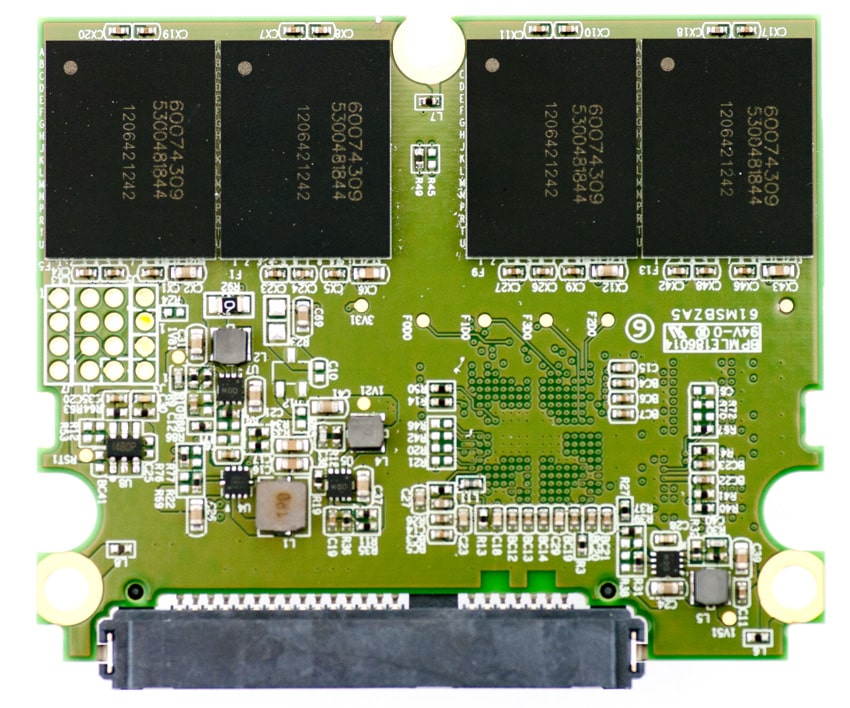
The Corsair Force Series LX SSDs use the Silicon Motion SM2246EN controller as well as 128Gbit Micron 20nm ONFI MLC NAND.
Consumer Synthetic Workload Analysis
All consumer SSD benchmarks are conducted with the mid-range StorageReview Consumer Testing Platform. The comparables used for the review below include:
- Crucial M500 (480GB, Marvell 9187, Micron 20nm MLC NAND, SATA)
- Crucial/Micron M550 (1TB, 20nm 64Gb, 128Gb MLC, Marvell 88SS9189 Controller, SATA)
- OCZ Vertex 460 (240GB, Indilinx Barefoot 3 BF3-M10, Toshiba 19nm MLC Flash, SATA)
- Samsung SSD 840 EVO (250GB, 400MHz Samsung 3-core MCX controller, Samsung 1x nm Toggle NAND Flash, SATA)
- Corsair Force LS (240GB, 19nm Toshiba MLC, SATA)
All IOMeter figures are represented as binary figures for MB/s speeds.
In our first test measuring 2MB sequential performance, the Force LX measured an impressive read speed of 517.6MB/s read but with a disappointing 285.1MB/s for write activity, outperforming all of the competition in the read column.
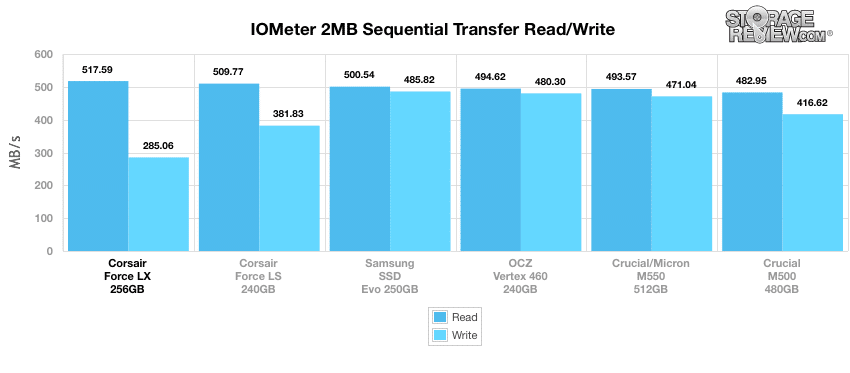
Our next test looks at 2MB random transfer performance. In this benchmark, the Force LX measured 496.6MB/s read and 283.9MB/s write, with the former and latter taking first and 2nd last place respectively.
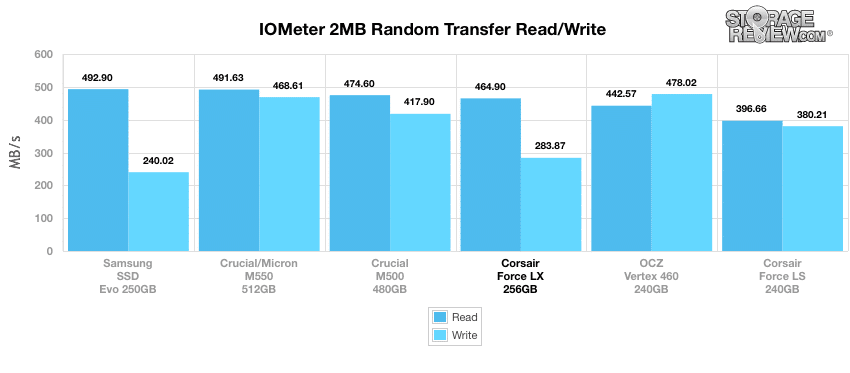
Switching to our smaller 4K random transfers, the Force LX only measured in at 7,341IOPS read activity and only 18,515.5IOPS for write activity.
When comparing average write latency between each consumer SSD, the Force LX ranked at the bottom of the pack with a time of 0.054ms average latency with a peak latency of 11.73ms.
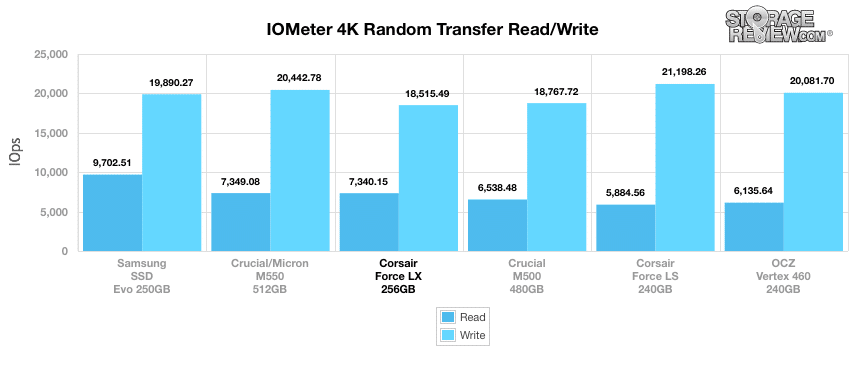
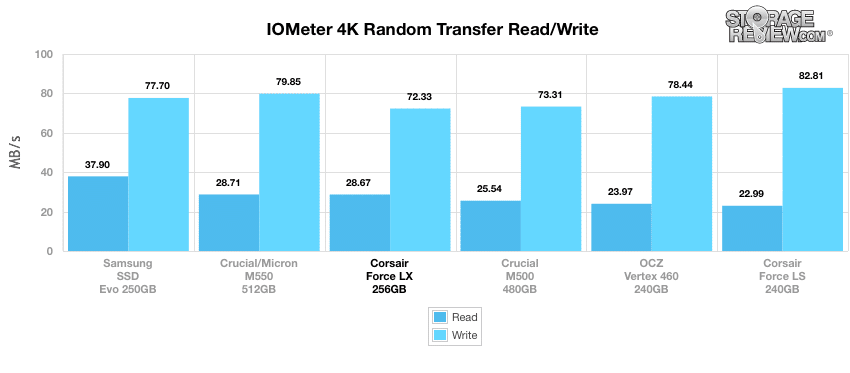
Our next test focuses on a smaller 4k random workload with 100% read activity that scales from 1QD to 64QD. In this setting Force LX scaled from 7,379IOPS to only 75,604IOPS, results of which are near the bottom of the pack.
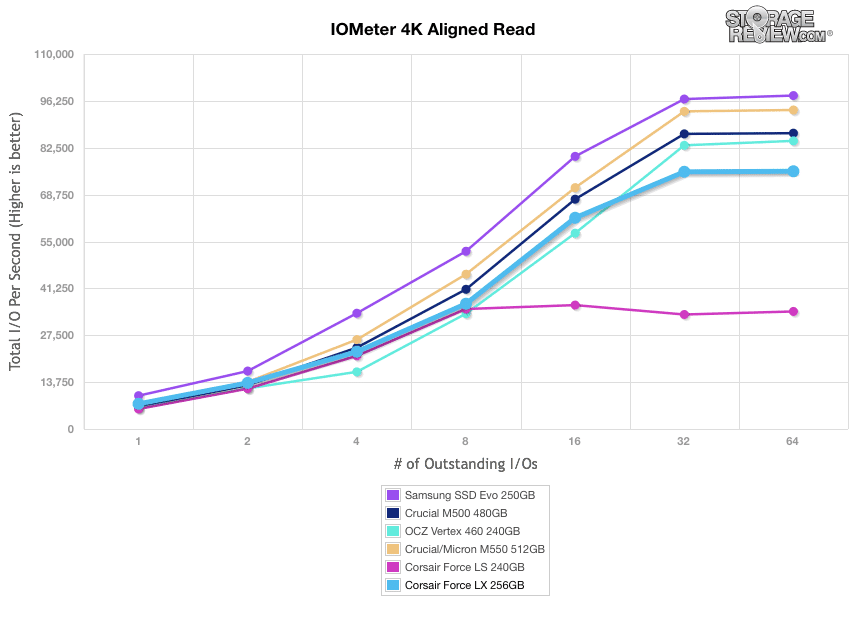
Switching to write activity, the Force LX maintained its position near the bottom in smaller workloads, posting 18,523IOPS at QD1 and peaking at 70,274IOPS.
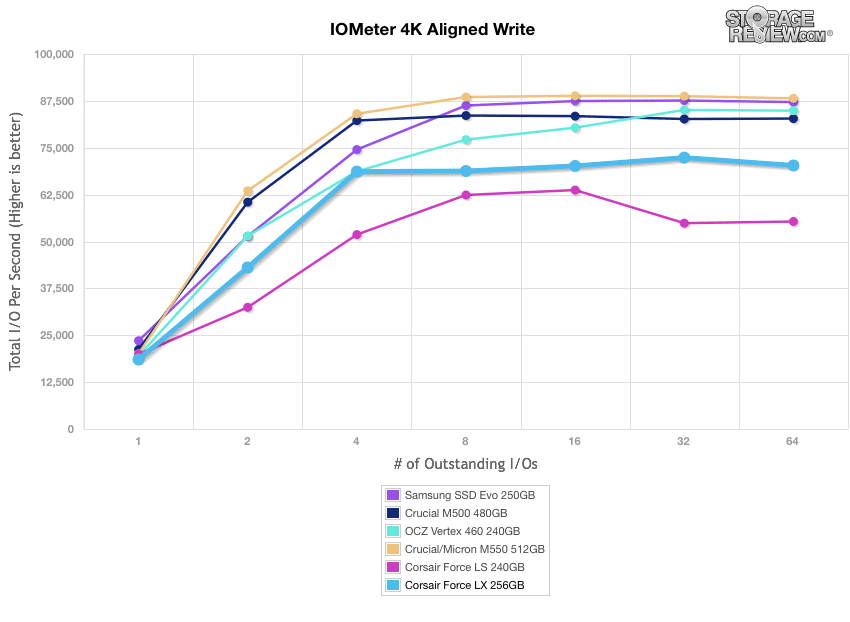
Our last series of synthetic benchmarks compare the hard drives in a series of server mixed-workloads with a queue depth of ranging from 1 to 128. Each of our server profile tests has a strong preference towards read activity, ranging from 67% read with our database profile to 100% read in our web server profile. In all of our mixed workloads, the LX Force ranked near the bottom.
The first is our database profile with a 67% read and 33% write workload mix primarily centered on 8K transfer sizes. In the test, the Force LS clocked in at 6,836IOPS in Q1 and reached 33,135IOPS by Q128.
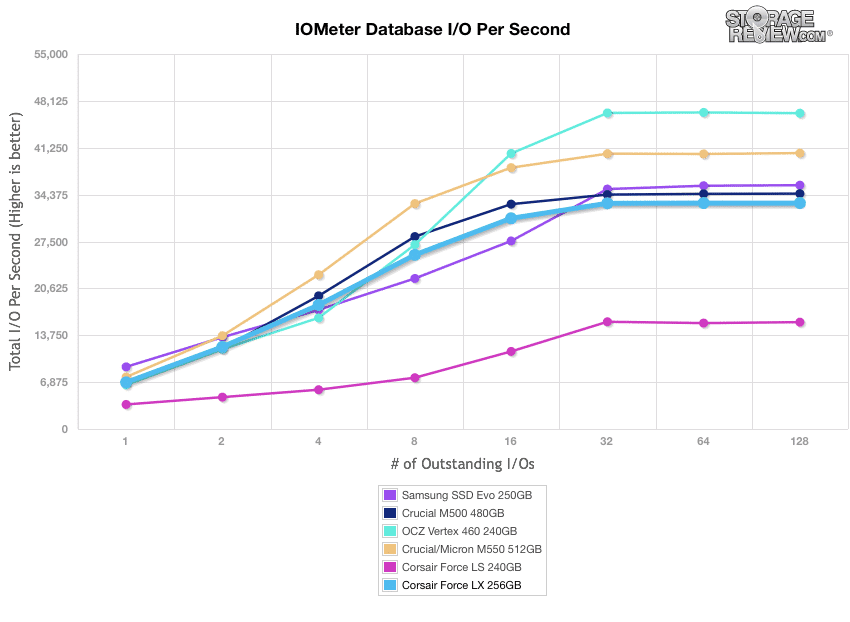
The next profile looks at a file server, with 80% read and 20% write workload spread out over multiple transfer sizes ranging from 512-byte to 64KB. The Corsair Force LX posted a Q1 throughput of 6,026IOPS and 25,916IOPS by Q128, which was right in the middle of the pack.
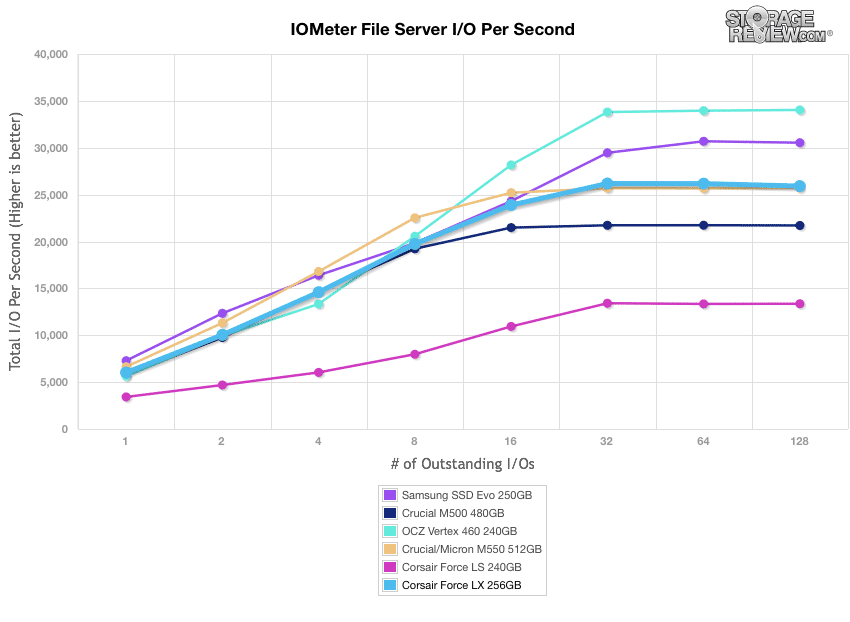
Our web server profile is read-only with a spread of transfer sizes from 512-byte to 512KB. The Force LX posted a Q1 of 4,985IOPS while hitting 23,55IOPS by Q128.
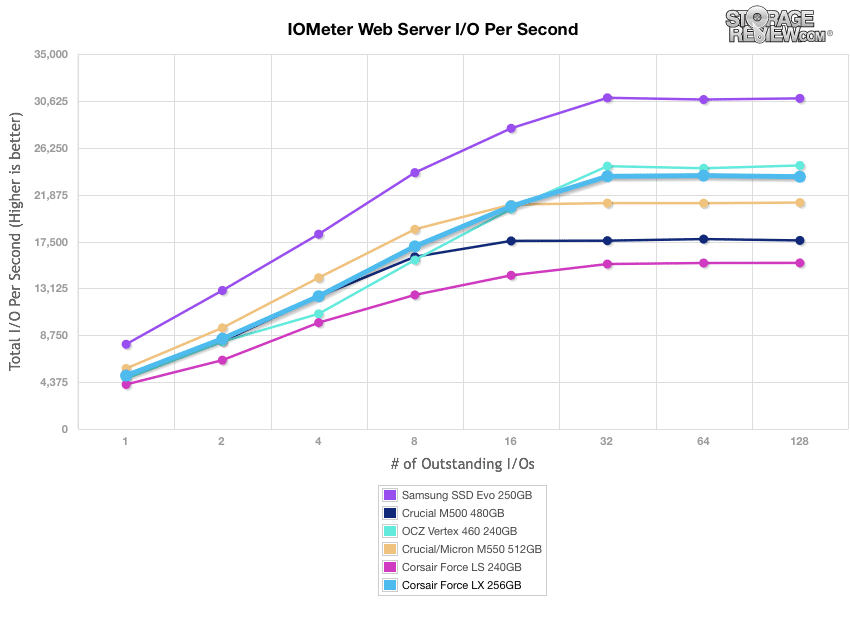
The last profile looks at workstation activity, with a 20% write and 80% read mixture using 8K transfers. In QD1, the Force LX drive started at the 5,064IOPS mark and reached 36,595IOPS by Q128.
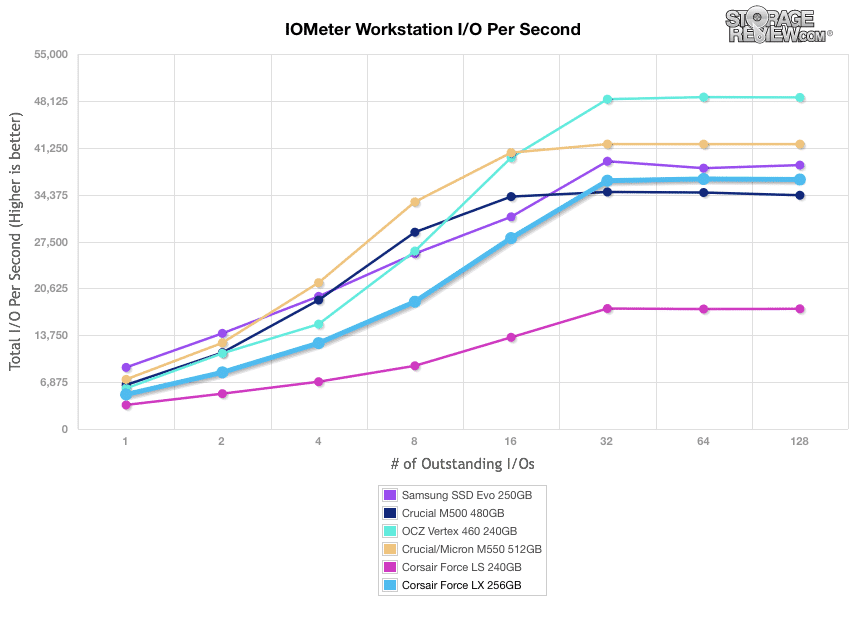
Consumer Real-World Benchmarks
For the average consumer, trying to translate random 4K write speeds into an everyday situation is pretty difficult. It helps when comparing drives in every setting possible, but it doesn’t exactly work out into faster everyday usage or better game loading times. For this reason we turned to our StorageMark 2010 traces, which include HTPC, Productivity, and Gaming traces to help readers find out how a drive might rank under these conditions.
The first real-life test is our HTPC scenario. In this test we include: playing one 720p HD movie in Media Player Classic, one 480p SD movie playing in VLC, three movies downloading simultaneously through iTunes, and one 1080i HDTV stream being recorded through Windows Media Center over a 15 minute period. Higher IOps and MB/s rates with lower latency times are preferred. In this trace we recorded 2,986MB being written to the drive and 1,924MB being read.
In our HTPC profile, the Force LS clocked in at 5,811IOPS ranking right in the middle of the pack. Additionally, it boasted only 269.1MB/s with an average latency of 1.30ms.
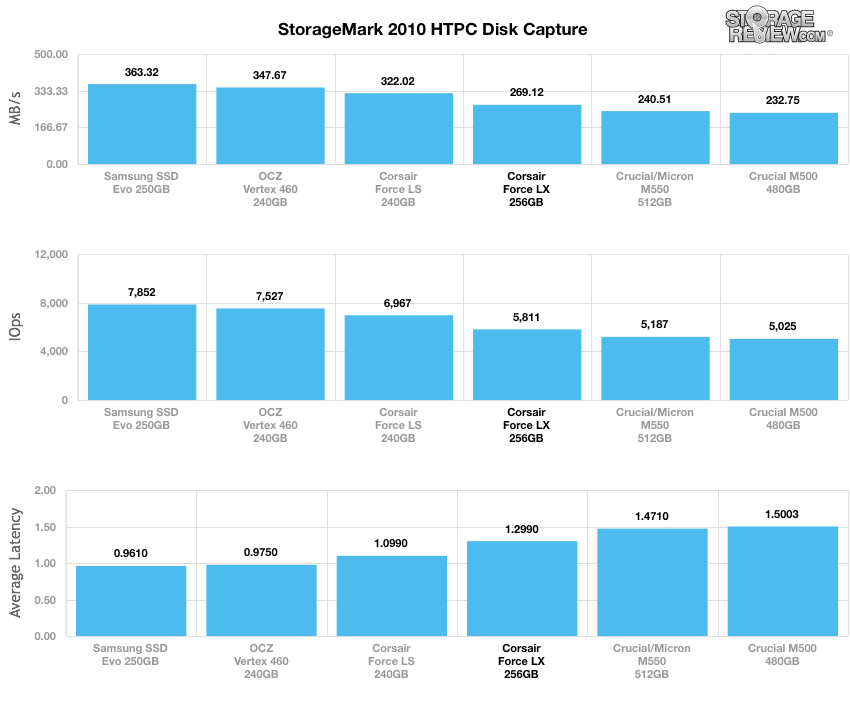
Our second real-life test covers disk activity in a productivity scenario. For all intents and purposes this test shows drive performance under normal daily activity for most users. This test includes: a three hour period operating in an office productivity environment with 32-bit Vista running Outlook 2007 connected to an Exchange server, web browsing using Chrome and IE8, editing files within Office 2007, viewing PDFs in Adobe Reader, and an hour of local music playback with two hours of additional online music via Pandora. In this trace we recorded 4,830MB being written to the drive and 2,758MB being read.
In our Productivity trace, the Force LS performed very well here, registering 215MB/s with a throughput of 7,354IOPS, ranking 2nd in all categories behind the OCZ Vertex 460
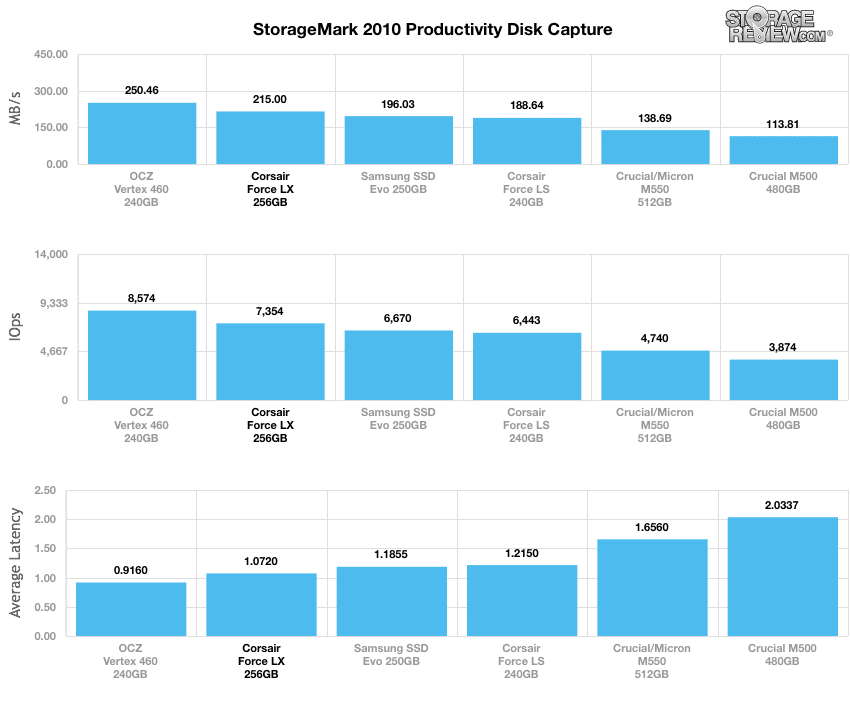
Our third real-life test covers disk activity in a gaming environment. Unlike the HTPC or Productivity trace, this one relies heavily on the read performance of a drive. To give a simple breakdown of read/write percentages, the HTPC test is 64% write, 36% read, the Productivity test is 59% write and 41% read, while the gaming trace is 6% write and 94% read. The test consists of a Windows 7 Ultimate 64-bit system pre-configured with Steam, with Grand Theft Auto 4, Left 4 Dead 2, and Mass Effect 2 already downloaded and installed. The trace captures the heavy read activity of each game loading from the start, as well as textures as the game progresses. In this trace we recorded 426MB being written to the drive and 7,235MB being read.
In our read-intensive Gaming trace, Force LX produced excellent results, posting an IOPS of 8,724 with 459.2MB/s, which were the top performers. The average latency recorded was 0.90ms.
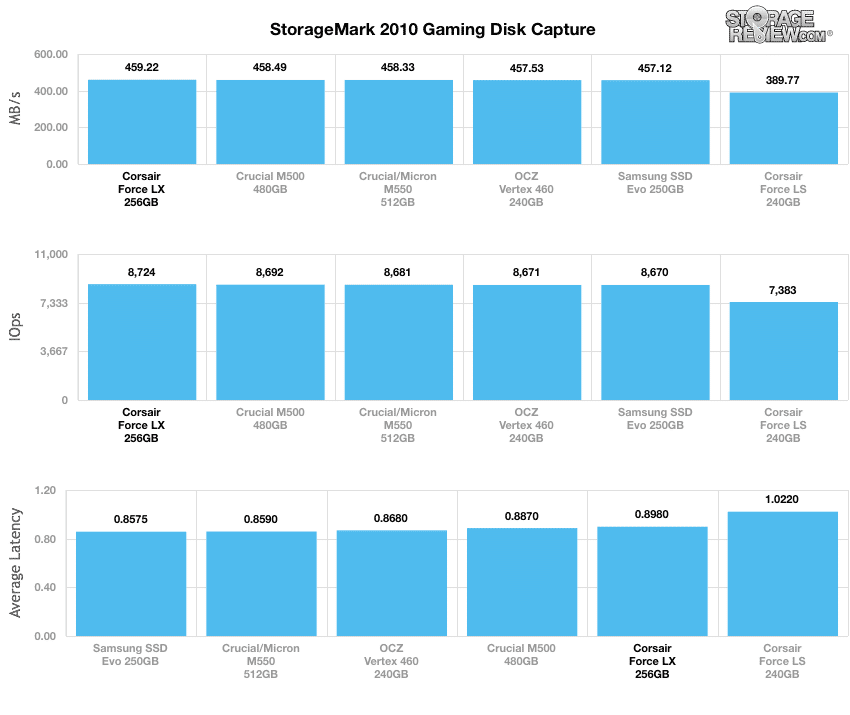
Power Consumption
Since SSDs spend much of life-cycle in an idle state, low idle power consumption is very important in overall SSD power management and health.
We measured idle power consumption from the Force LX at 0.29W as well as 3.09W and 1.48W during sequential write and read activity respectively. These results were noticeably lower than its predecessor, the Force LS, which posted 4.58W and 2.36W during sequential write and read activity respectively.
Conclusion
The Force Series LX SSDs are designed for new users as well as those that are on a budget looking to upgrade from their HDD-based rig to an SSD without paying a premium price-point. Corsair indicated that their new SSD line will post very fast sequential and random read throughput due to its Silicon Motion SSD controller paired with Micron 20nm ONFI NAND. When we put it through our extensive tests, those claims definitely seem to be valid when looking at the results of our 2MB sequential performance tests. Though it did not reach Corsair’s quoted numbers of 560MB/s read and (up to) 300MB/s write, it still posted respectable results for its class and price point. The drive also routinely outpaced the prior generation LS, so intra-family, it’s a good step forward.
Diving deeper into the performance results, the Force Series LX posted results all over the board during our tests but performing fairly well overall. In our real-world workloads, it ranked in the at the top echelon amongst value-oriented drives, especially in our gaming trace in which it was the top performer. When we measured its performance in our single workloads, the Force Series LX fared well in the read column during the 2MB transfer tests; however, it performed well below par in the write column as well as during our 4K tests. In our mixed workload performance benchmarks, the new Corsair drive ranked in the middle to lower throughout.
As previously mentioned, Corsair has suggested that this is a value play entry into the company’s SSD line though it is priced very similar to the superior performing 250GB Samsung EVO ($140 vs. the Force LX’s $130). This isn’t very surprising, however, as Samsung (as well as Micron) own their NAND fabrication plants, giving them every pricing advantage over companies like Corsair who have to rely on other companies for their NAND. Samsung is also hell bent on pricing all of its competition out of the SSD market in the client space, which is pretty much what they have done historically in other market segments. That’s not to say that it didn’t perform well enough to satisfy the performance needs of mainstream consumers (because it did), but Corsair will have to somehow lower the price of their Force Series LX even more or else it will have a tough time competing and staying relevant. If they do manage to drive pricing down, it will definitely give Samsung and Micron SSDs a run for their money in the budget-friendly SSD upgrade market.
Pros
- Solid design
- Great read activity performance
- Good MSRP out of the gate
Cons
- Needs even lower pricing to compete with Micron and Samsung
- Write performance below par
Bottom Line
Consumers on a budget looking to upgrade their PCs to an SSD might find this to be an viable option; however, when it comes down to it, the Corsair Force Series LX SSD is a drive that faces strong competition from similarly classed SSD products from tier one vendors with similar to better performance. There’s really not much wrong with the drive in this market segment; as soon as it’s significantly less expensive than the Samsung and Micron offerings it’s worth a look.
Corsair Force Series LX SSD at AmazonDiscuss This Review


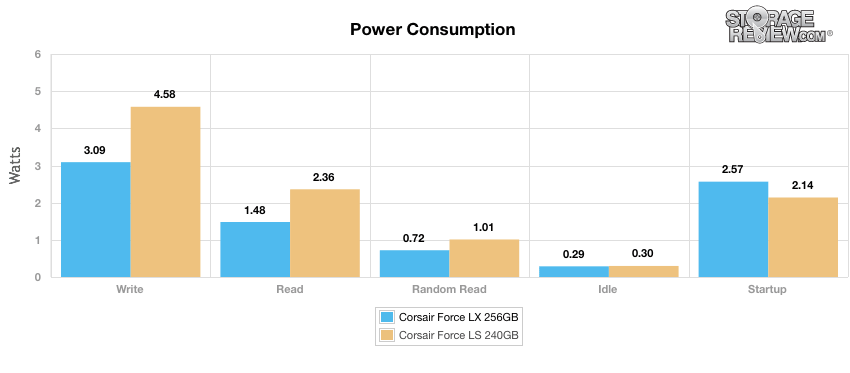


 Amazon
Amazon